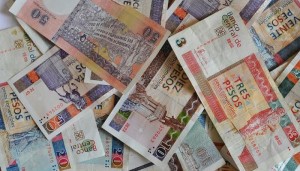
Dual currency will be phased out, Granma announces
Cuba on Tuesday announced the start of a process to eliminate the dual currency system it has maintained since 1994.

“On an experimental basis, in selected places, cash payments may be made in CUP for their equivalent calculated at the CADECA exchange rate of 25 CUP for 1 CUC,” said an Official Note published in the government daily Granma.
CUPs are pesos that are good only inside the island and are reserved for domestic transactions; CUCs are convertible pesos that are considered hard currency and are used for transactions with foreign interlocutors such as tourists.
CADECA is the acronym for Casas de Cambio, the official money exchange bureaus.
Most Cubans are paid their wages in CUPs, while tourists exchange their native currency for CUC in order to buy goods on the island. Today, 1 CUC is the equivalent of 24 CUPs. Officially, the CUC is on a par with the U.S. dollar.
Until now, stores that sold goods for CUCs accepted payments in CUPs only if they were made through debit cards in CUP denomination. That practice will be continued, Granma said.
“The Council of Ministers has agreed to set in motion a timetable for the execution of the measures that will lead to monetary and exchange unification,” Granma said.
The process will affect “legal persons and natural persons,” i.e., businesses and individuals. “The main changes in this first stage will take place in the sector of legal persons [businesses], to propitiate the conditions for an increase in efficiency, a better tallying of economic events, and a stimulus to the sectors that produce goods and services for export and the substitution of imports.”
First there will be “a period of preparation of conditions that will allow the drafting of proposals for legal standards, a design for changes in the computer systems that deal with records and adjustments in the accounting standards. This will also be an essential stage for the training of the people who must deal with executing the various transformations.”
The note stressed that “no measure adopted in the monetary field will be detrimental to those persons who legally obtain their income in CUCs and CUPs.” The inference is that anyone who receives money illegally will run afoul of the law.
The note also reassures bank depositors by saying that “the process of monetary unification respects the principles that the confidence earned by the people who have kept their savings in Cuban banks in CUCs, other international currencies and CUPs will remain intact.”
Subsidized food prices will remain unaffected, the note says, specifying that “the current policy on subsidies to retail prices and persons will continue to be applied where necessary, so long as the nation’s economic conditions so require.
“Both the CUCs and the CUPs are Cuban currencies issued by the Central Bank of Cuba and will retain its full backing.”
The official announcement is short on details, but it promises that “as the timetable progresses, details will be provided about the measures that become necessary at any time to the specialists in the organizations that must participate in its implantation as well as to the population.”
Monetary unification “will not solve by itself all the current problems of the economy,” the note concedes, “but its application is mandatory so as to guarantee the reestablishment of the value of the Cuban peso and its functions as money, i.e., a unit of accounting, a means of payment and savings.
“That, along with the application of the remaining policies intended to update the [economic] model, will bring order to the economic environment and, consequently, provide a correct measurement of its results.”


